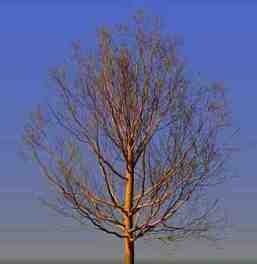Time Theory Of Raga-s

Time Theory Of Raga-s |
 |
By Dr. Lalmani Misra |
 As is well known to all, Indian music is evolved along natural notes adding new ones on basis of consonance, which resulted in development of a system with Raga and Tala.
Music in the rest of the world has notes and their combinations along with combinations of beat and rhythms whch seldom attain accuracy of compositions based on Raga and Tala. Raga is a later name of Jati as K. Vasudeo Shastri mentions in his book, Sangeet Shastra; the development of Jati-s was an outcome of ancient Sam-Gana, which according to Naaradiya Shiksha possesses one thousand varieties of singing.
As is well known to all, Indian music is evolved along natural notes adding new ones on basis of consonance, which resulted in development of a system with Raga and Tala.
Music in the rest of the world has notes and their combinations along with combinations of beat and rhythms whch seldom attain accuracy of compositions based on Raga and Tala. Raga is a later name of Jati as K. Vasudeo Shastri mentions in his book, Sangeet Shastra; the development of Jati-s was an outcome of ancient Sam-Gana, which according to Naaradiya Shiksha possesses one thousand varieties of singing.
Indian scholars plunged deep in the ocean of music to come up with rare pearls of cultivated sound. To understand Raga one has to be acquainted with all its constituents that accord it a living personality. It would be a superficial attempt to define a Raga by its ascension and descension; it is the traditional movement of small phrases that gives a clue to its identity. In using a note, one should know the value of stopping at or passing through the note. I am certain that the reader would be acquainted with all other essentials and therefore I shall move on to relation of Raga with Time. Even for the traditional performer it has been a complicated issue. The musicians of Hindustani music system are rigidly trained to observe the time of singing of a Raga. It has been communicated to me by several of my Carnatic musician and musicologist friends that this is not a mere traditional belief but in some Raga it is an observable fact and this should be observed in Carnatic system also. On the other hand, a number of Hindustani and Carnatic artistes and musicologists even today doubt the existence of relationship between time and Raga.
Before committing myself any further, I would like to place certain observations for your sympathetic consideration.
Have you ever noticed the change in human behaviour from
dawn to dusk, from summer to winter and rains to autumn? Sometimes the
effect of time on individual is so deep that the same person, who acts
as a serious, peaceful, tolerant individual at a given moment of the day,
becomes angry, annoyed and an irritant at another. Sometimes he acts dissociated
while at other times he shows genuine interest in every bit of his surroundings.
Several reasons might be assigned for this change
depending on particular circumstances, but on a holistic level the effect
of natural changes can not be denied.
assigned for this change
depending on particular circumstances, but on a holistic level the effect
of natural changes can not be denied.
Have you ever observed your own nature minutely? How and why you like soft sound, soft light, soft colour in the mornings and late night while you do not mind bright colour and loud noises during the day time? How at some given instant you get annoyed with shouts and laughter of children playing in the street, while at other moments you feel like joining them in their fun and make noise yourself? Why do you like to walk slow and talk little at one time and do just the opposite at another?
Have you tried to feel the effect of a single musical note and then a number of soft and comparatively harsh combinations of notes?
If you have gone through these experiences, have the habit of observing the effects derived from nature – from sound, light color – I am sure your will agree at least on this point that a particular note or a certain combination of notes creates a kind of effect on our mind which is best suited at a particular time of the day to the outside nature as well as to our own nature than at any other time. The Indian notes have the ability to please and entertain everybody and are called Swara-s. Swatah ranjayati iti swaraah. However, it would be a more fit and refined study if we can also find which Swara would produce the most expected effect and at what time and under which conditions. I have purposefully added the word condition because a manipulation of condition may change the effect of time. Hence to study the effects of a particular note a certain time will also require the natural condition of time. It comes as a pleasant surprise to realize that the effect of notes was experienced by musicians even in the Vedic times. Thus is that the singing of notes and pitch and place differ in Sama-gana from morning to noon to evening. After due consideration, use of a specific Jati for a particular situation in drama was approved. Music is often defined as language of emotions. If this is treated as axiomatic then the relation between musical notes and emotion is established. As mentioned earlier, the nature and intensity of emotions undergo a continuos change from dawn to dusk. It is thus in accordance with the principle of consonance to establish all arts resting on human feelings, in direct relation to emotions. Dr. Deva of Central Sangeet Natak Akademi is working to establish the Raga-time relationship by examining the effects on musically untrained ears and I have no doubt that results obtained by him are encouraging.
I myself have considered this aspect of music in a more natural manner and uncovered that there are certain sets of Raga-s that observably reflect the feel and time of day. For example, Jogia is played at the break of dawn and then come Bhairav, Kalingra and Bhairavi. With young sun gradually maturing, the sets of Asavari, Jaunpuri, Gandhari, Deogandhar etc. follow, displaying strength of notes by changing of Komal Rishabh into Shuddha Rishabh. By noon, softness of Komal Nishad and Komal Dhaivat is also driven away; the notes become plain (Shuddha) in the group of Sarang. With the arrival of evening, sharp (Teevra) Madhyam is introduced which gradually attains prominence in Raga-s like Yaman, Shree, Marwa and Purvi etc. Komal Gandhar brings joy, happiness and lively feeling until and unless it is manipulated from a different angle to produce the feeling of pathos. After a full day’s labour, the later evening is a time for revelry and rejoicing. This mood is sincerely created by the group of Kafi, Bageshri, Sindura etc.
It might be stating an obvious fact but to get the correct feeling and effect thereon of a Raga, one has to listen with taste and tradition of musical expression through ear. This taste is not to be confused with taste and expression produced and felt by tongue, eye, nose and skin.
There are some other groups of Raga-s, the reasons for placement of which in a particular time-slot I am not in a position to substantiate. For example, Bilawal is a group of morning Raga-s rich in Shuddha notes while the group of Malkauns and Kanhara with Komal Dhaivat are placed between nine and eleven in the evening. A reason that comes to mind is that man holds both a sympathetic and antagonistic positions with nature. I have earlier admitted that manipulation of condition may change the effect of time and at times it may be the requirement to dissociate oneself in order to regain and assert one’s individuality.
During the medieval period in India under the
patronage of Muslim rulers musicians created certain new Raga-s and applied
their own logic in deciding their time relationships. To explain the Mishra
or mixed Raga-s  I take the example of Raga Bahar
to show how it has been mixed with other Raga-s, morning, evening or some other
time. Bahar being a seasonal Raga can be sung at almost any time during its
own season but traditionally it is sung between nine and eleven in the evening.
Mixed with a morning Raga like Bhairav or Hindol it can be sung in the mornings
as Bhairo Bahar or Hindol Bahar; mixed with evening Raga-s it can be sung then,
like Basant Bahar and Bageshri Bahar. There are about seven ways of mixing two
or more Raga-s but for fixing time the principle above has been largely accepted.
I take the example of Raga Bahar
to show how it has been mixed with other Raga-s, morning, evening or some other
time. Bahar being a seasonal Raga can be sung at almost any time during its
own season but traditionally it is sung between nine and eleven in the evening.
Mixed with a morning Raga like Bhairav or Hindol it can be sung in the mornings
as Bhairo Bahar or Hindol Bahar; mixed with evening Raga-s it can be sung then,
like Basant Bahar and Bageshri Bahar. There are about seven ways of mixing two
or more Raga-s but for fixing time the principle above has been largely accepted.
Pandit Bhatkhande has dealt with the principle of fixing time of a Raga. Looking to the present day needs of musicians and scholars alike, I would suggest that expert musicians and musicologists of our country should meet for reassessing the reasons and logic behind Time-Raga relationship as also re-examining the time already prescribed to Raga-s. If it is felt necessary, in order to suit the natural relations between Raga and emotional feeling of modern man, a new revised timetable of Raga should be created.

Other Articles :
Nestling Among Honey-buds : A short note on Dr. Lalmani Misra
Dr. Misra and I -- Nancy Nalbandian
Points to Ponder: Some Do's for Musicians
Contemporary Problems for Indian Music
Excerpts from Bharatiya Sangeet Vadya - Sitar
Dr. Lalmani Misra on Wikipedia
For views of musicians on aspects of music click here